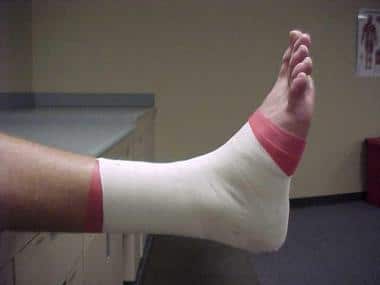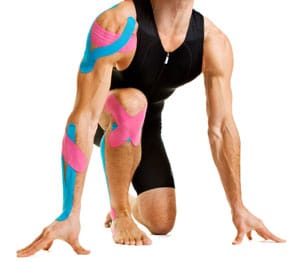ATHELETIC & KINESIOLOGY TAPING

Athletic taping is the process of applying tape directly to the skin in order to maintain a stable position of bones and muscles during athletic activity. It is a procedure that uses tape, attached to the skin, to physically keep in place muscles or bones at a certain position. This reduces pain and aids recovery.
Taping is usually used to help recover from overuse and other injuries. The general goals of athletic taping are to restrict the motion of injured joint, compress soft tissues to reduce swelling, support anatomical structure involved in the injury, serve as a splint of to secure a splint, secure dressing or bandages, protect the injured joint from re-injury, and protect the injured part while the injured part is in the healing process.
BENEFITS
- Reduces pain
- Increased stability
- Aids recovery
- Restricts Undesired Movement
- Protects Injury
INDICATIONS
- Sports Injury
- Chronic pain
- Poor Joint Stability
- Injury Protection
- Postural Dysfunction
- Inflammation

Kinesiology tape is a thin, stretchy, elastic cotton strip with an acrylic adhesive. Therapeutic kinesiology tape that can benefit a wide variety of musculoskeletal and sports injuries, plus inflammatory conditions.
Kinesiology tape is almost identical to human skin in both thickness and elasticity, which allows kinesiology tape to be worn without binding, constricting or restriction of your movement.
BENEFITS
- Supports muscle and joint movement
- Non-constricting and non-restricting of movement
- Reduces inflammation
- Breathable
- Can wear for up to 5 days even with showering and swimming
- Helps to prevent injury
- Improves stability of muscle and joint
- Can be used on muscle and bone
- Improves lymphatic drainage
- Optimize performance
- Neuromuscular Facilitation
- Promote circulation
- Reduce pain
INDICATIONS
- Sports Injury
- Sports Performance
- Debilitated muscles
- Edema
- Poor circulation
- Postural dysfunction
- Unstable joint movement
- Injury Prevention
- Muscle strain
- Hypertonicity

